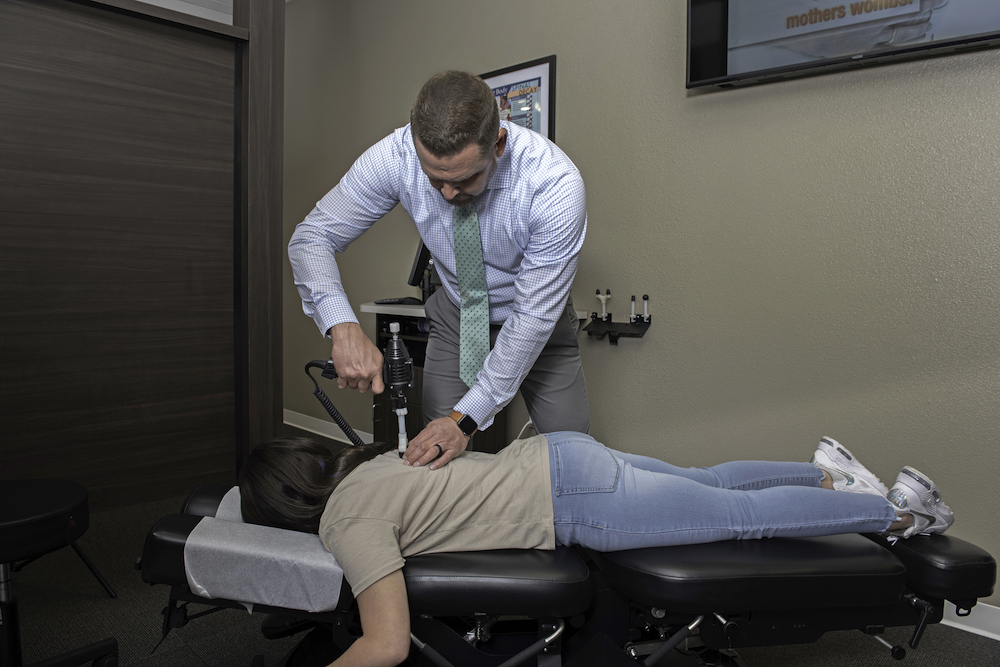6 Overlooked Remedies for Lower Back Pain
4 min read

Lower back pain can easily get in the way of your regular activities. Not only does chronic pain cause physical concerns, but it can easily create emotional troubles as well. And that’s something you might not expect!
If you’ve been living with lower back pain, then it’s likely you’re looking for some relief outside of pain medication and stopping your regular activities while you heal. Fortunately, several home remedies may help you. These simple activities show how small lifestyle changes can make a really big difference.
- Get Plenty of Rest
- Find Joy in Your Day
- Stretch Your Back Out to Reduce Pain
- Strengthen Your Core to Help Your Back
- Develop Your Brain’s Skills to Manage Pain
- Release Endorphins
Let’s take a look at how these six remedies can improve your back health and get you back to feeling better.
1. Get Plenty of Rest
Sleep is important for your body to function properly. It becomes even more important when you aren’t feeling your best. Lack of sleep can make the pain even worse and can set up a vicious cycle that disrupts your overall health. If you suffer from lower back pain, you may have problems falling asleep and staying asleep. Getting plenty of rest provides what is called restorative sleep. This is the time where your body recharges and heals. As you sleep, your body works to restore itself and boost energy levels.
If you’re having trouble sleeping, talk to your doctor. There may be lifestyle changes or other treatment options to ensure that you’re getting the sleep your body must have.
2. Find Joy in Your Day
Experiencing ongoing or chronic pain can create stress and sadness, which can make the pain even worse. You may be surprised to learn that happiness and joy can actually provide some pain relief. Participating in activities you enjoy, such as going on a walk, talking with a friend, or reading your favorite book, can make your pain a bit more bearable. Giving your mind something else to think about for a little while may help relieve pain. Consider doing activities that don’t require a lot of physical movement, but still bring a smile to your face. Doing a couple of fun activities each day can make your pain more manageable over time.
3. Stretch Your Back Out to Reduce Pain
Stretching is incredibly important for keeping your body functioning at its best. Before you stretch your back, talk to your doctor or chiropractor to be sure the stretches won’t cause more injury or back pain.
But one of the leading causes of lower back pain is tight hamstring muscles (that are in the back of your thighs). You may forget to stretch them, but it’s really easy to do! You only need 15-30 seconds, a couple times a day to stretch the back of your legs and you can easily do them around your home or office without any equipment. Not only can these stretches help with reducing back pain, you can also prevent future injuries caused by tight “hammies”. There are numerous online videos for quick and easy hamstring stretches that will loosen your body and help relieve back pain.
4. Strengthen Your Core to Help Your Back
Your abdominal muscles, also called abs or core muscles, help support your lower back. If you have weak ab muscles, it means that your lower back is not getting enough support. And that can lead to injury, and injury can lead to pain.
Poor posture and lack of strengthening activities are the big causes of a weak core. If you spend a lot of time sitting throughout the day, it’s likely that your ab muscles don’t get enough strengthening exercise. Work on engaging your core by doing a few simple ab exercises per day. Even sitting up straight with good posture, while tightening your core muscles, will strengthen your ab muscles over time. Aim for 20-30 minutes of ab exercises per day to help get your core strong enough to support your lower back. Check out a few online videos to learn simple ab exercises to strengthen your core.
5. Develop Your Brain’s Skills to Manage Pain
Have you ever heard about someone who has a high threshold for pain? It’s probably related to how their brain processes pain. The link between the brain and how your body receives pain signals is well documented. It’s possible to develop skills that help you reduce pain signals, or in some cases, even ignore pain signals altogether. This technique is called mindful pain management.
Mindful pain management involves meditation practices and controlled breathing. If you’re new to mindful pain management, look for resources online to get you started. These practices teach you to relax and breathe through pain episodes. People who use this method successfully report a reduction in pain when they have episodes.
6. Release Endorphins
Endorphins are a type of hormone that your body naturally creates. Sometimes referred to as “happy hormones,” endorphins actually improve mood and make you feel happier. Endorphins have been linked to many different health advantages, including relieving pain and anxiety, reducing stress, and decreasing depression. While your body naturally produces endorphins, there are a few other activities that can further boost endorphin levels:
- Aerobic and cardio exercises
- Meditation and yoga
- Massage therapy.
Always talk with your doctor or chiropractor before starting a new exercise program, especially if you’ve had an injury or you haven’t exercised in a long time.
Chiropractic Care for Lower Back Pain Relief
These simple remedies may provide some back pain relief you’ve been hoping for. But... they don’t work for everybody. Chiropractic care may be the solution that you need to relieve lower back pain. If you’ve been struggling with back pain, it may be time for an evaluation from a chiropractor.
We’re located in The Woodlands and help patients throughout Montgomery county including Magnolia, Spring and Conroe. Request an appointment and we will bring you in to talk about your back pain and what can be done to help relieve it.





